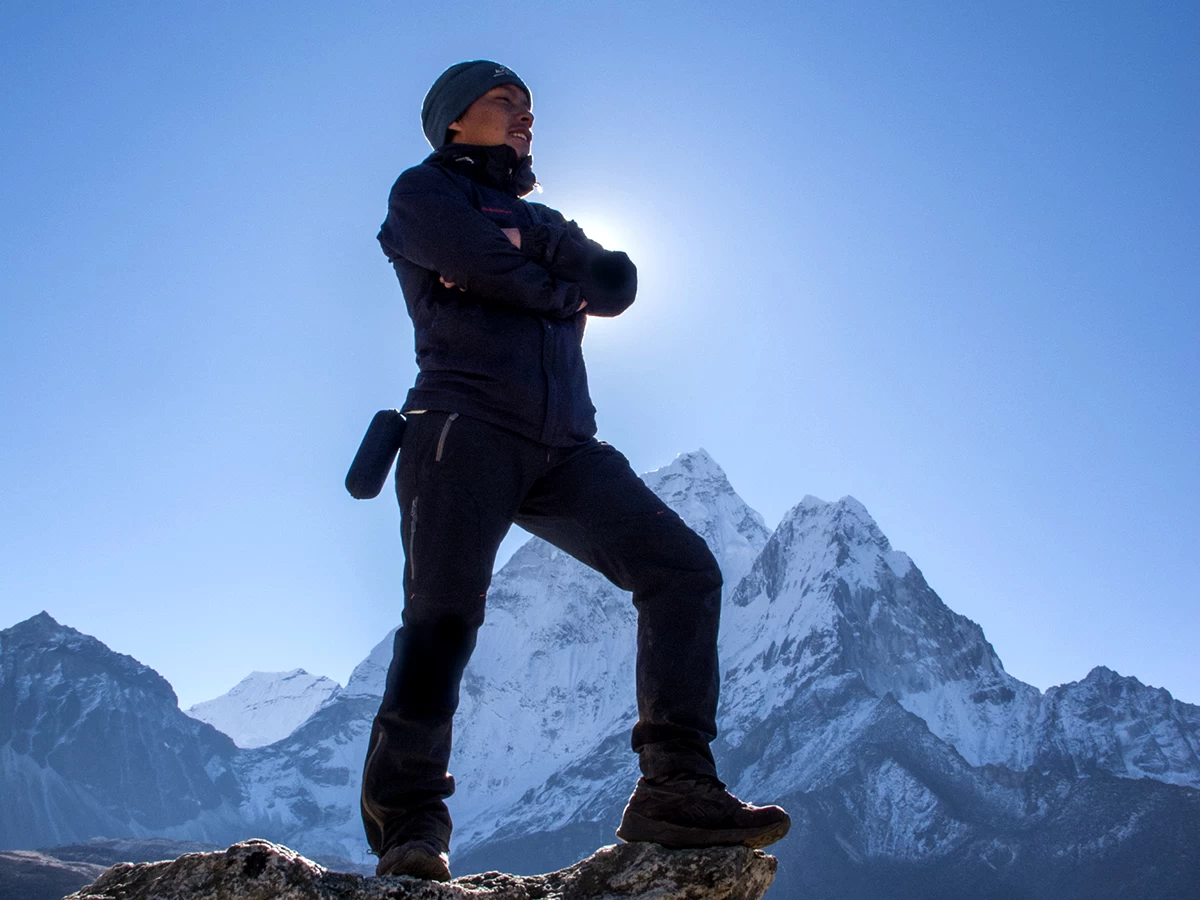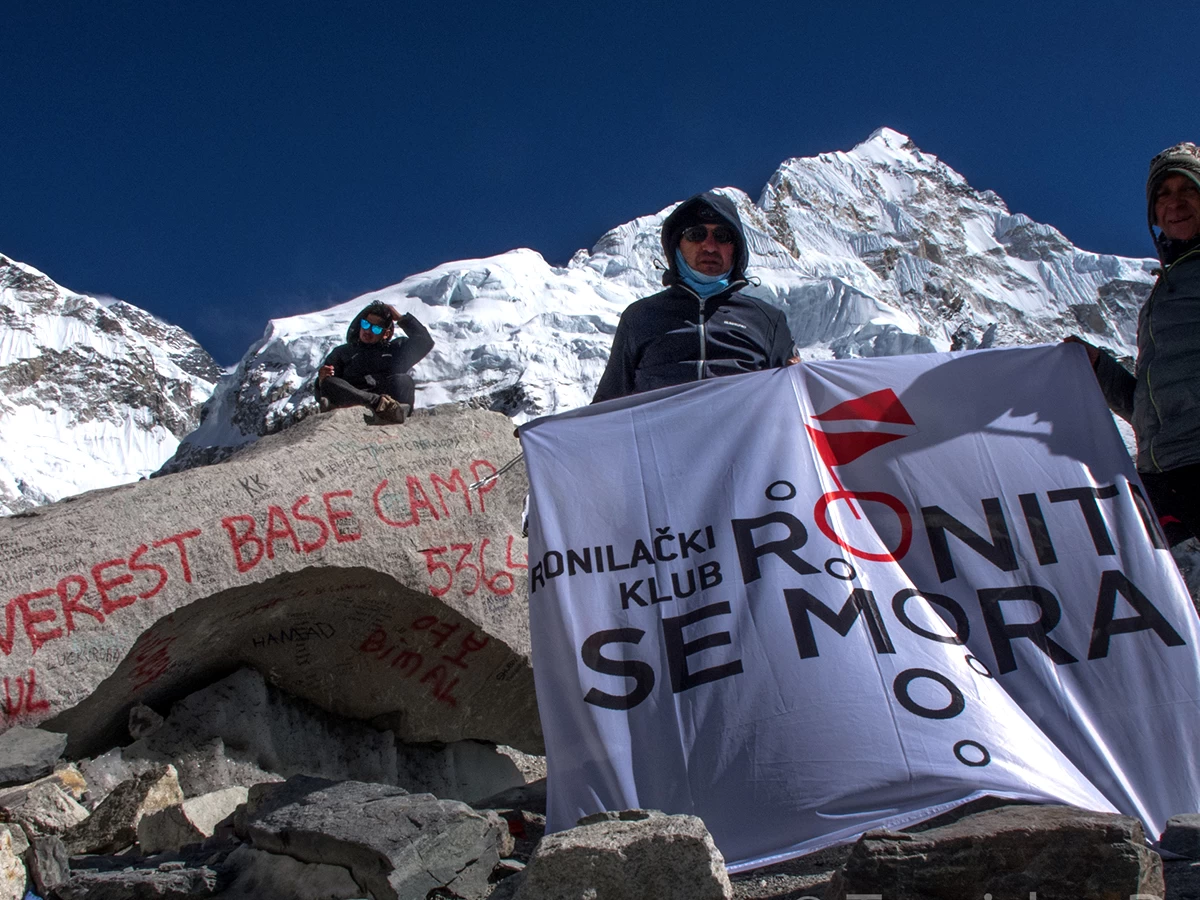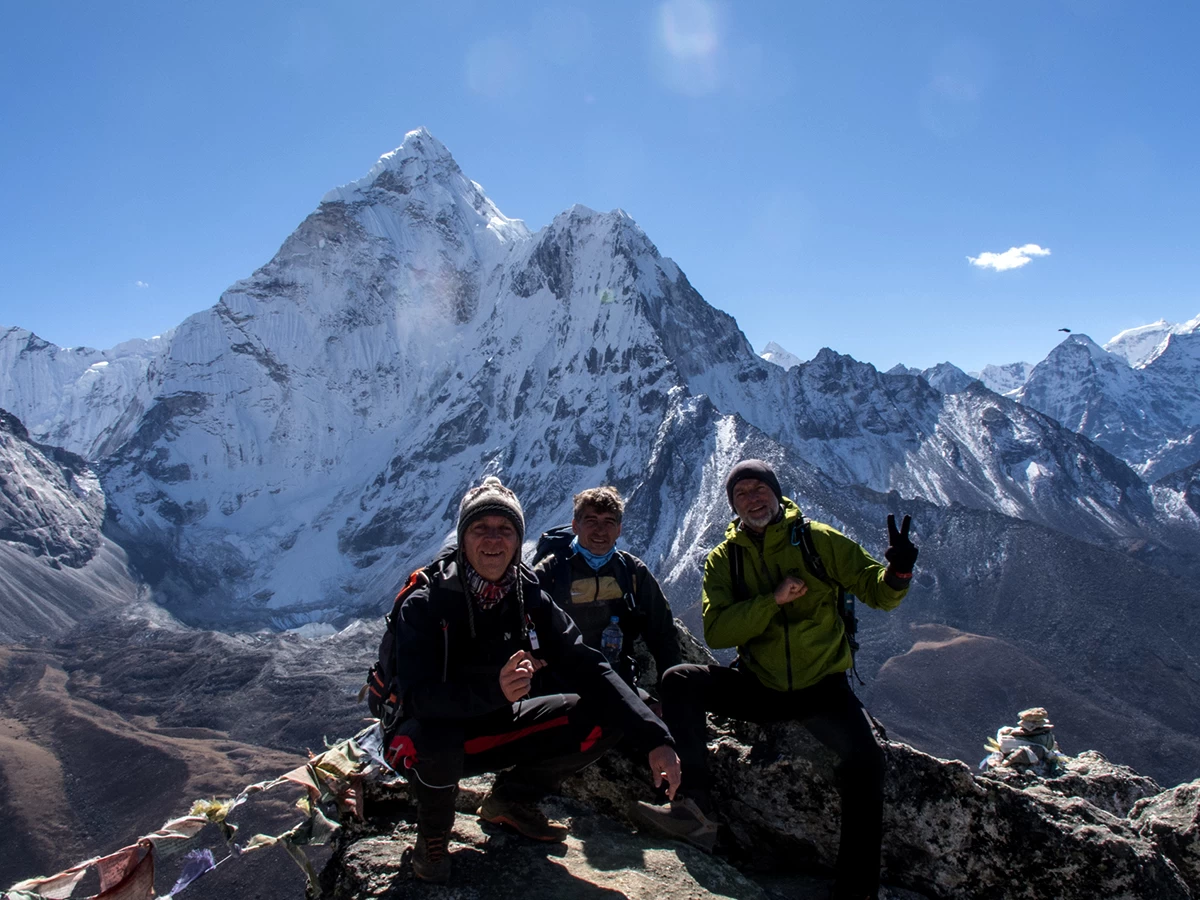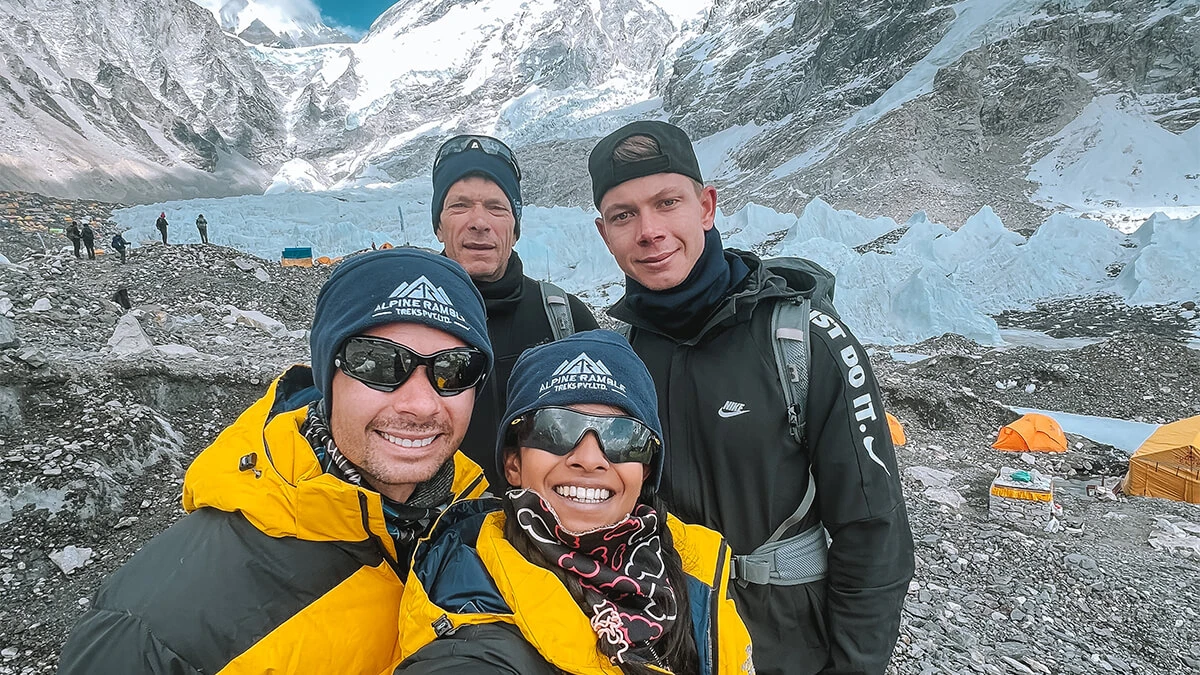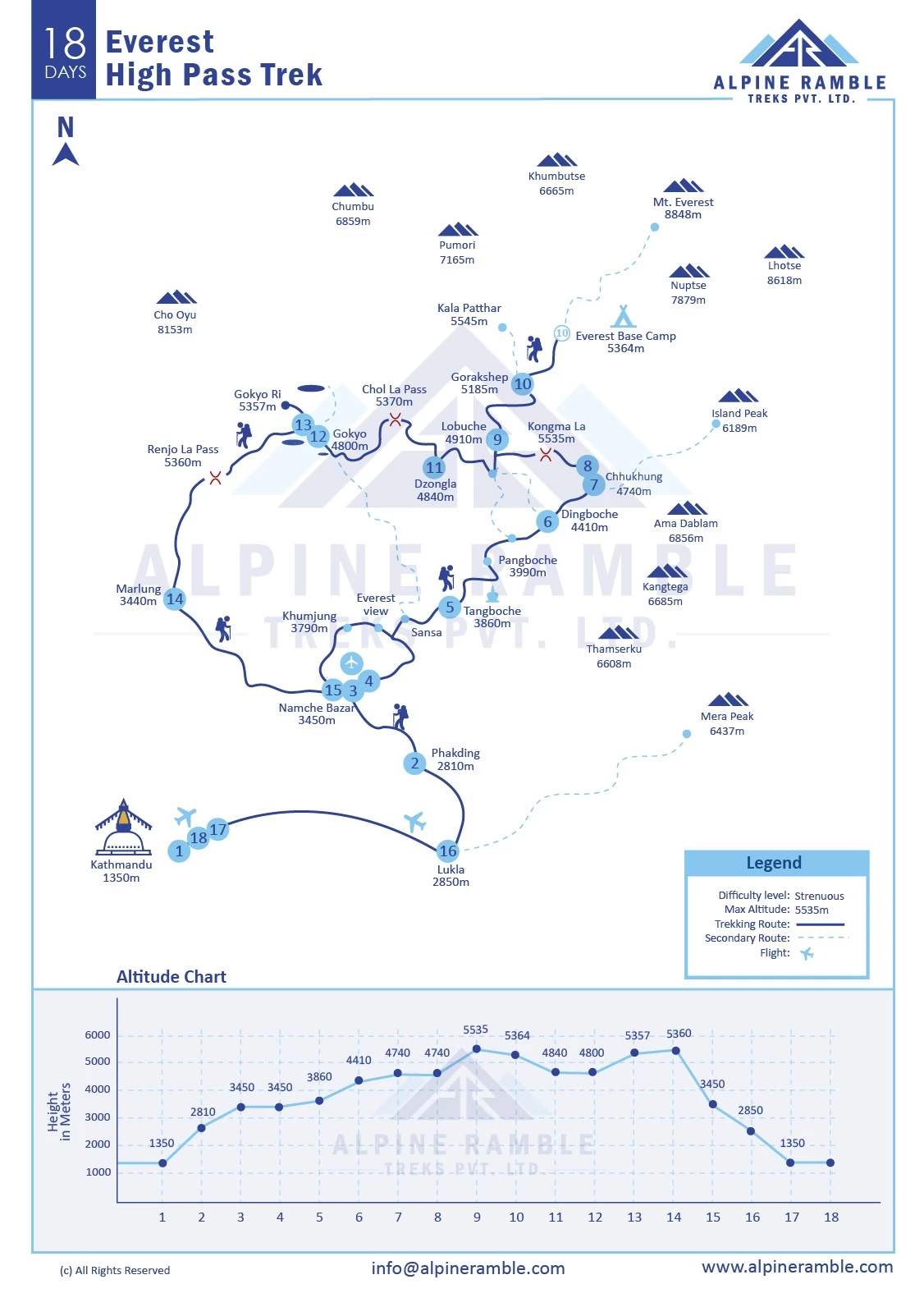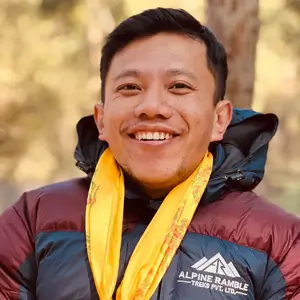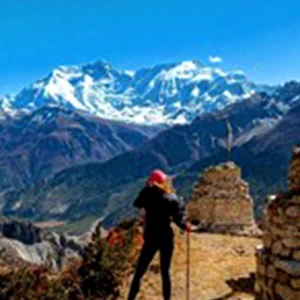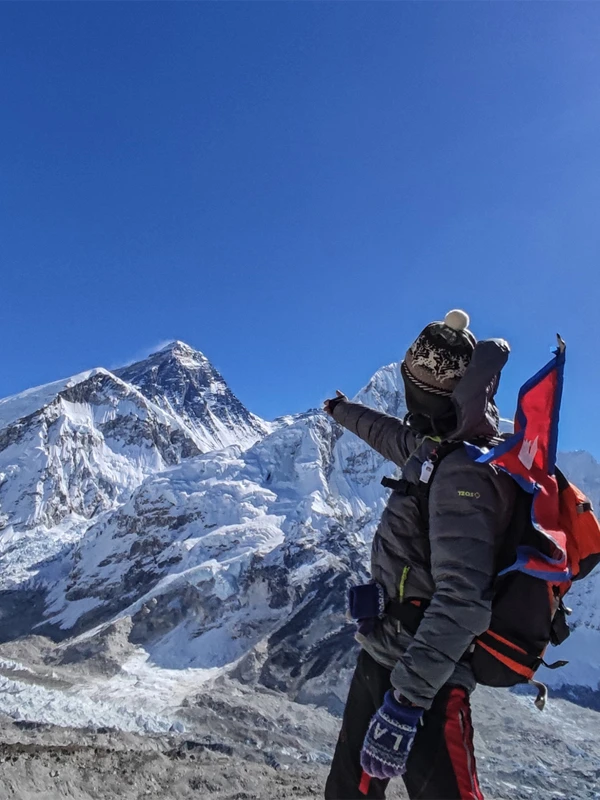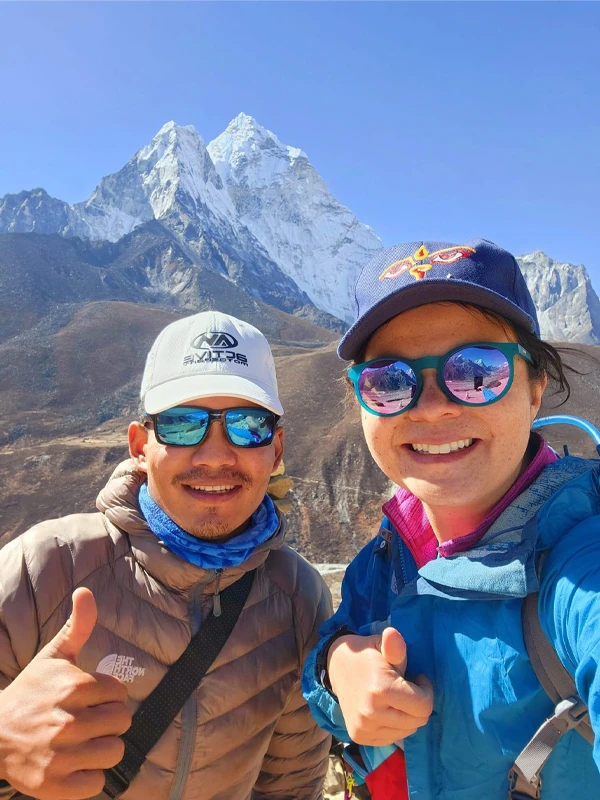Some trails change the way you travel. The Everest Three Passes Trek changes the way you see the world.
Across 18 days you trace a loop through the Khumbu that connects three high mountain passes, Kongma La (5,535 m), Cho La (5,420 m) and Renjo La (5,360 m), each a window into a different Himalayan universe.
Where most trekkers turn back after Everest Base Camp, you keep going, higher, quieter, further into the land that taught the world the meaning of resilience.
It’s the trail of bridges that hum with prayer flags, of tea houses lit by solar lamps, of families who still bake apple pies at 14,000 feet.
For Western travelers, this is the ultimate “beyond Base Camp” experience, a trek where your story intersects with Himalayan history.
Since Sir Edmund Hillary and Tenzing Norgay first stood on Everest’s summit in 1953, these valleys have been the heartbeat of mountain adventure. Today, guides from across Nepal, Sherpa, Rai, Tamang, Magar, and more; walk the same stone steps, welcoming trekkers from every continent.
For Alpine Ramble, a local trekking company in Nepal with 15 years of experience and 15,000+ happy travelers, the Three Passes route isn’t just a challenge, it’s a masterpiece.
Every ascent, every glacier crossing, every cup of tea with a villager is part of a living heritage we’re honored to share.
If the classic Everest Base Camp Trek is a symphony, the Three Passes Trek is the extended version, with mountain solos, surprise movements, and moments of absolute silence.
Highlights: Why This Journey Stands Out
- Three World-Class Passes - Kongma La, Cho La, and Renjo La form a loop that circles Everest itself, the only trek in Nepal to do so without technical climbing.
- Everest Base Camp (5,364 m)- Walk where the world’s climbers pitch their dreams each spring; feel the Khumbu Glacier crack beneath your feet.
- Kala Patthar (5,545 m) - A front-row seat to Everest sunrise; the panorama includes Lhotse, Nuptse, and Pumori.
- Gokyo Lakes (4,700–5,000 m) - Turquoise high-altitude lakes considered sacred by Hindus and Buddhists alike; photographers call this Nepal’s mirror to the sky.
- Namche Bazaar (3,445 m) - The Sherpa capital where trekkers and traders share coffee shops and stories; home to the world’s highest Irish pub.
- Tengboche Monastery (1916) - Spiritual heart of Khumbu; monks chant at dawn while Ama Dablam glows beyond the windows.
- Sagarmatha National Park - UNESCO World Heritage since 1979; habitat of musk deer, Himalayan tahr, and rare snow leopards.
- Cultural Harmony - A journey through Sherpa, Rai, and Tamang settlements; each village adds its own dialect, architecture, and rituals to the tapestry.
- Community Impact - Every Alpine Ramble departure supports local schools and porter welfare initiatives, because responsible travel is our highest pass.
Could This Be Your Everest Three Pass Story?
Picture this: You wake before sunrise in a teahouse in Chhukung. The air is thin, crisp, electric.
Outside, a line of headlamps snakes up the ridge toward Kongma La Pass. It looks like the Milky Way has fallen to Earth.
You breathe deep, steady your poles, and start walking. Below you, the Imja Khola valley stretches into a dreamscape of ice and stone.
Hours later, standing at the crest, Everest floats between clouds like a memory you haven’t lived yet.
That’s the moment most travelers describe as a “reset for the soul.” Because the Everest Three Passes Trek isn’t just about mountains, it’s about the inner summits you didn’t know you could reach.
Western travelers often compare it to the Alps or the Rockies and then pause, realizing those ranges feel civilized beside the Khumbu’s raw majesty. Here, villages still run on wood stoves and trust. Here, time moves at the pace of a pilgrim’s footsteps.
For many Europeans and Americans, this trek becomes a mirror, a way to step out of routine and rediscover presence, resilience, and wonder.
Who It’s For
Experienced Adventurers & High-Altitude Dreamers
If you’ve hiked the Alps, Andes, or Kilimanjaro and want something deeper, this is your next chapter. The Everest Three Passes Trek 2025/2026 demands stamina and rewards it with views few humans will ever see.
Photographers & Nature Lovers
The light in Gokyo valley is legendary, soft as Scotland in summer, but set against 8,000-meter walls. From alpenglow to starscapes, this trek is a living studio.
Cultural Travelers & Mindful Trekkers
You’ll share tea with families whose ancestors guided expeditions long before Wi-Fi. You’ll visit monasteries where monks still debate Buddhist logic at 5,000 meters.
Solo and Private Trekkers
Our local guides in Nepal are trained to adjust rhythm and route to your comfort. Private departures offer space for introspection; small groups offer camaraderie that feels like family by Day 3.
Couples and Friends on Milestone Journeys
Anniversary, retirement, a promise kept, whatever the reason, the Three Passes loop transforms achievement into shared memory.
The “Someday” Traveler Finally Saying Yes
Maybe you’ve read about Everest since childhood. Maybe you’ve postponed it for work, family, life. This is the trek that says, “someday” is now.
